Project History & Mission Profile
America’s Way to Pluto
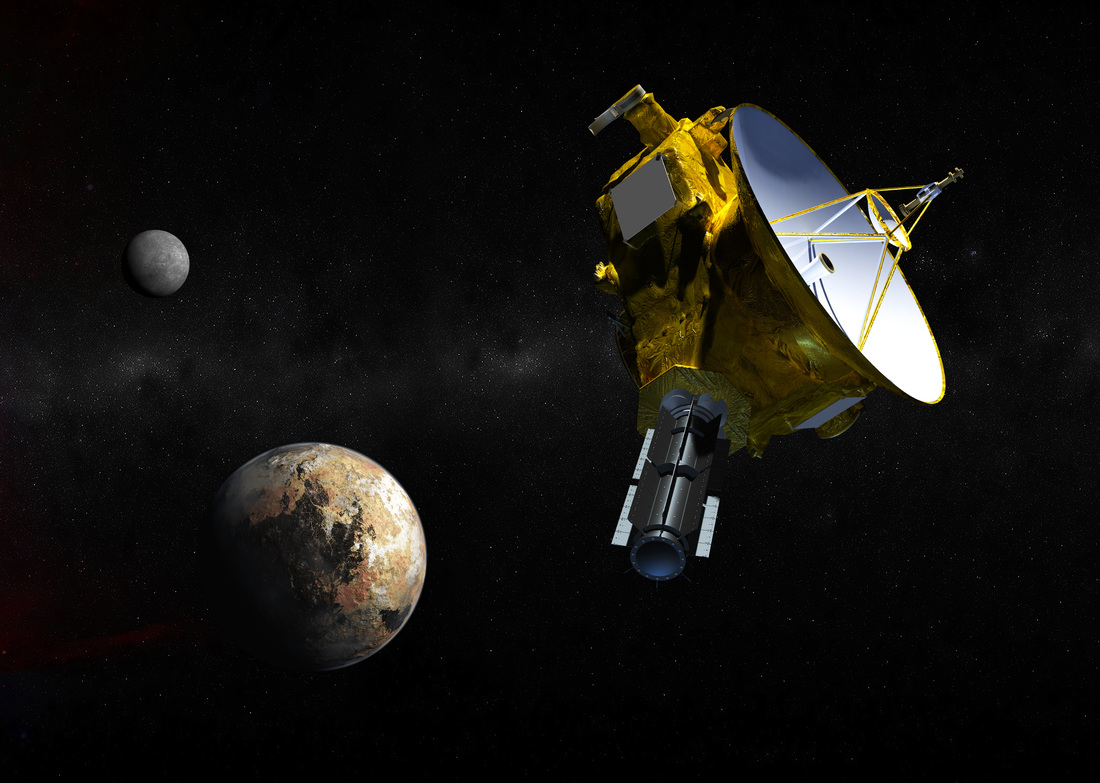
In the early days of space exploration when the first probes ventured to distant targets in the solar system, Pluto seemed to be out of reach given its incredibly large distance to Earth and the state of technology that was not reliable enough to stay operational for the long mission duration to get to Pluto.
In the 1960’s scientists discovered an opportunity would come around for the exploration of the outer solar system in the early 1980’s when all outer planets were lining up, to be accessible by sending spacecraft into one sector. Therefore, plans were initiated for two missions exploring Jupiter, Saturn, Uranus, Neptune and Pluto launching at the end of the 70’s. But those plans were scrapped due to budgetary reasons and changes made to the program led to the Voyager project. The prospect of building a “Voyager 3” at relatively low cost and sending it to Pluto via Jupiter was not pursued.
Pluto drifted out of focus in the 1970s when the current belief was that it was an icy world, not of great interest to science. Interest in Pluto was again raised in 1978 when its largest moon Charon was discovered by the Voyager missions, showing that Charon was of significant size, influencing Pluto’s rotation so that both only showed the same sides to each other. Furthermore, the Voyagers showed that previously uninteresting scientific targets such as the moons of Jupiter, Saturn and Neptune showed a great deal of activity when it had been believed that those icy worlds were not of great scientific interest. This raised the question whether Pluto was also an active world and not a lump of ice as previously believed.
In the 1980s, observations of Pluto showed that it had an atmosphere of Nitrogen and Methane that was present transiently when Pluto reached its closest distance to the sun in its elliptical orbit. With increased interest in Pluto, planning for a mission to the outermost planet in the solar system started, but was challenged by the extremely high energy required for the launch of a Pluto probe.
Launch windows to Pluto via Jupiter come approximately every 11 to 12 years, the 1979 window was not used since the Voyager 3 project was not realized. The window opening in 1991 also went by without an attempt to launch to Pluto after planetary science had entered a lull in the 1980 with no significant spacecraft developments.
Due to peaking interest in a mission to explore the ninth planet in the solar system, scientists did not want to miss the 2003-2007 window and a number of mission proposals were brought forward in the 1990s ranging from small scientific probes weighing no more than 40 Kilograms over multi-spacecraft missions to the Pluto Fast Fly-By project that was proposed in 1993 and included two 30-35kg probes launching on a Titan IV to fly past Pluto and study it with 7 instruments. However, the low mass of these probes could not be realized since the technology to build such light-weight systems was not available at the time. Rising to over $1 billion, predicted costs for this mission quickly became too high and the loss of the Mars Observer craft led to the cancelation of the project in its initial form.
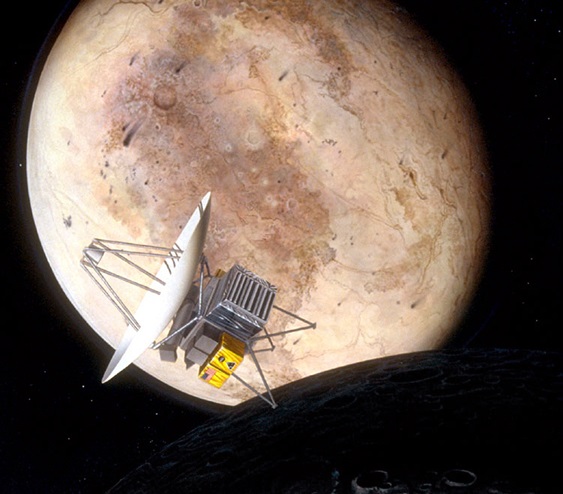
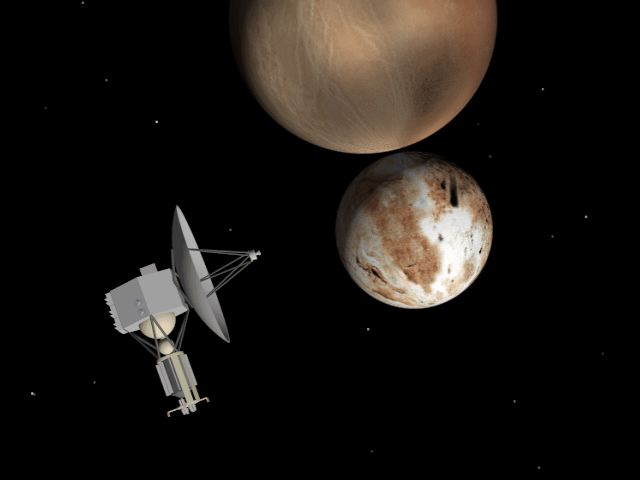
After the fall of the Soviet Union, NASA entered a cooperation with Russia in 1994 to prospectively launch the PFF mission on a Proton rocket with the addition of a Russian-built Pluto lander. Russia withdrew the lander concept after less than one year and the PFF project went back to plans of launching on a Titan IV or Delta II, the first would have enabled a 6.5-year journey to Pluto; a launch on Delta II would have increased the mission duration to 15 years. In a changing political environment, lengthy and expensive missions became less and less popular.
Under the “New Millennium” initiative, Pluto Fast Flyby became the Pluto-Kuiper-Express PKE – turning away from launching two probes to Pluto and exploring the possibility of building a single spacecraft for the exploration of Pluto and the newly discovered Kuiper-Belt Objects that promised to offer new insights into the early stages of the solar system.
A path was taken to develop three missions under one program to allow the spacecraft to use common systems, but this proved to be fatal to PKE as it was developed alongside an Europa Orbiter Mission for which a radiation shield had to be built to endure the harsh environment near Jupiter. This technology would not have been needed by PKE, but ate away a large chunk of the combined budget. PKE also got heavier and more expensive as time went on an the projections of total mission cost quickly approached the $1 billion-mark despite a budget of only $400 million. This led to a stop of the PKE project in September 2000. At that time, the launch window for Pluto was approaching rapidly, requiring a sound mission concept to be developed quickly.
The cancelation of PKE raised anger among scientists who had been counting on a mission launching in the 2003-07 window. Public awareness was also raised and led to a passionate response as Americans saw Pluto as the last great mystery in the solar system as it was the only planet that had not been photographed from close-up. It was also the only planet discovered by an American and was widely viewed as an ‘underdog character’ after it had already been in danger of losing its planetary status. A call for new mission proposals was made in December 2000 after Congress delivered $30 million in funding for the study of a Pluto Exploration Mission.
In January 2001, a proposal team convened at the Applied Physics Laboratory of Johns Hopkins University to submit a mission proposal based on the PKE spacecraft. The project team was led by Alan Stern who had already proposed a mission plan for a Pluto Explorer when the Voyager missions were in the midst of their journey past Neptune.
At the time the mission was selected by NASA as one of three proposals for further study, no name for the spacecraft had been selected. A range of possible names were discussed by the team ranging from Voyager 3, over New Worlds Explorer and X for Planet X that was being searched for when Pluto was discovered in 1930.
Alan Stern did not want the mission name to be an acronym, but the suggestions that had been offered did not seem to be quite right – Voyager 3 was off the table given the first two Voyager craft were operated by JPL and the Pluto mission is under operations by JHU, One Giant Leap appeared too big of a name, New Frontiers was also being looked at but ultimately became the name for NASA’s new solar system exploration program of which the Pluto probe was the first mission.
Alan Stern came up with the name ‘New Horizons’ when looking into the distance during a trip into the mountains. The name was officially selected in February 2001 and a detailed mission proposal was submitted to NASA in April when the group of competing missions were narrowed down to two – New Horizons and POSSE, the Pluto and Outer Solar System Explorer. Since Johns Hopkins University had previous experience building interplanetary spacecraft, its proposal was selected in November 2001 for the Phase B in-depth study of the spacecraft and instrument design.
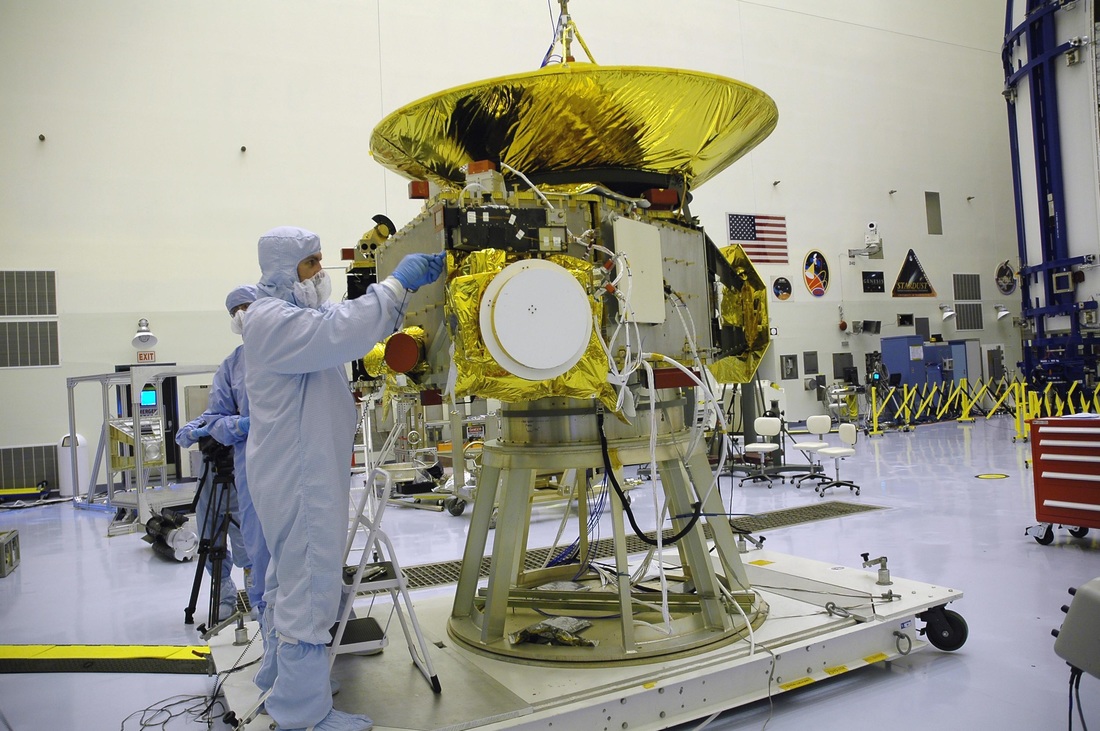
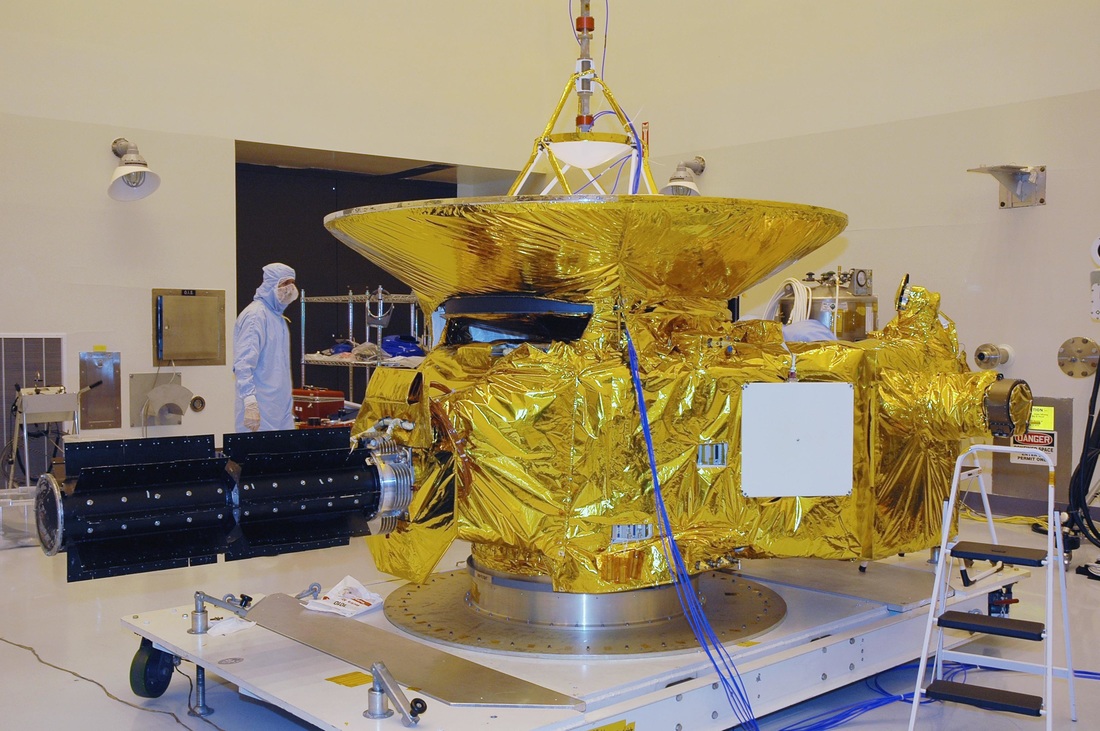
Given the struggle of earlier mission proposals that fell through due to politics and budgetary reasons, a launch of New Horizons at or anywhere close to the opening of the Pluto launch window in 2003 was impossible. Although the window extended through 2007, there was some urgency in the development of the mission, however, the White House continued to torment the project with budget cuts. In March 2003, New Horizons entered its development phase after all concept studies had finished and a finalized spacecraft design and payload selection was submitted. For the 2004 fiscal year, NASA requested $130 million for the New Horizons project, but the White House cut their request in half, agreeing to $65 million, luckily Congress overruled that decision and allocated a further $105 million for the project, eliminating any financial concerns and allowing New Horizons to proceed into the manufacture of the spacecraft and the instruments.
Good news came for the project in 2003 when new observations of Pluto showed that is atmosphere was still expanding. Pluto’s atmosphere is only present when it is close to the sun, inside the orbit of Neptune. Passing perihelion in 1999, Pluto began a long trek back out in its highly elliptical orbit that takes it through the coldest regions of the solar system leading to the substances in its atmosphere to freeze and precipitate to the surface. It had been feared that no atmosphere would be present on Pluto when New Horizons flew past, but the new observations indicate the the atmosphere will be present when the spacecraft reaches its destination.
New Horizons was hit by bad news in July 2004 when it became clear that the Radioisotope Thermoelectric Generator was behind schedule. To add to the problem, work at Los Alamos National Laboratory where the RTG was being manufactured had to stand down for five weeks due to a possible breach of data security in an unrelated project. The RTG can hold 72 General Purpose Heat Source pellets that hold the Plutonium needed to generate heat that can be converted into electrical power.
New Horizons was planned to use 36 leftover pellets from the Cassini mission and 36 pellets filled with imported Russian plutonium, but only 18 had been ready by July 2004 and the installation of the finished RTG on the New Horizons spacecraft was planned for December – beginning a race against the clock.
A delay of the launch by one year would have meant a delay in the arrival at Pluto by three to four years due to trajectory constraints – adding risk of the atmosphere freezing out and taking away valuable scientific insights and also adding up to $100 million in mission cost. Therefore, it was decided to keep to the original schedule even if it meant to launch with less power, limiting the scientific capabilities of the spacecraft.
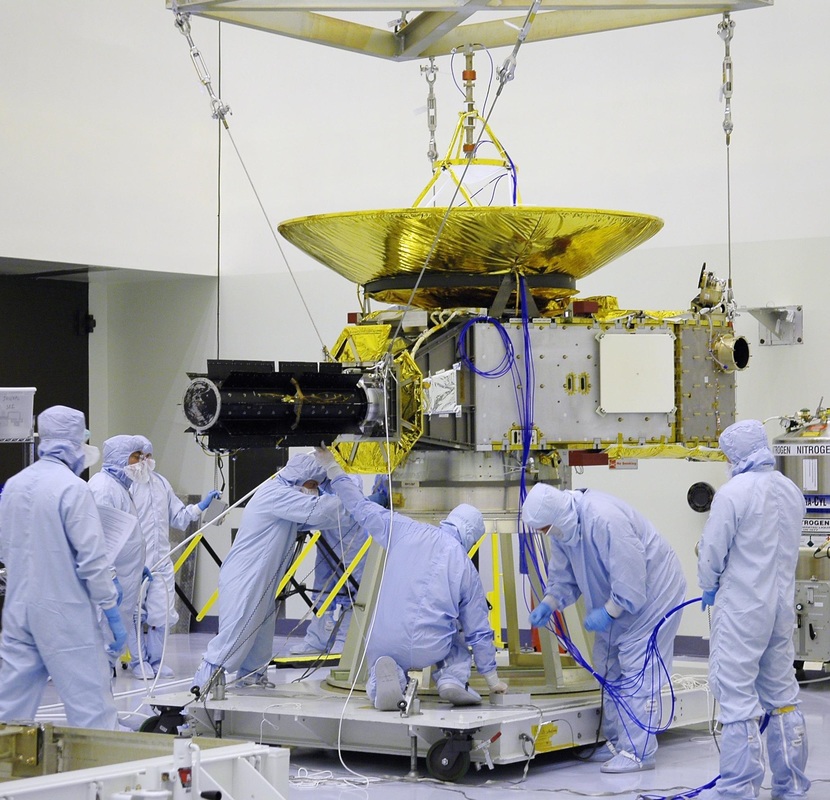
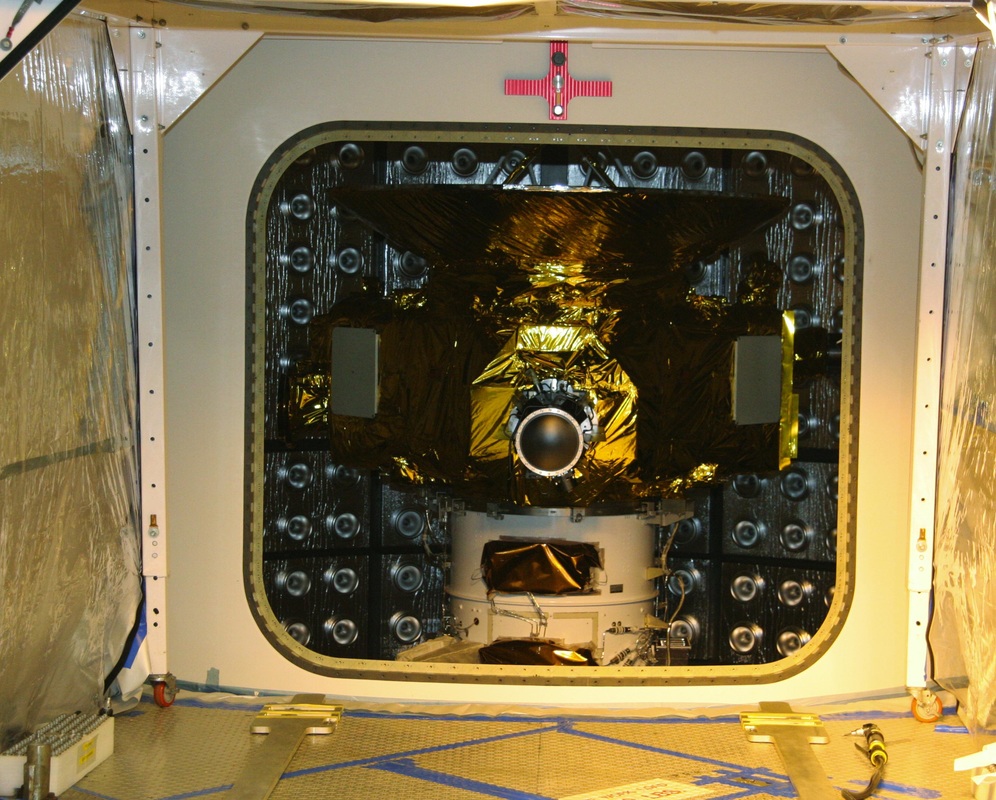
More bad news emerged in October: the Ralph instrument was months behind schedule and there was a real possibility of losing color-imaging of Pluto because the project would not have delayed the launch if Ralph had not been ready. By March 2005, integration of the instruments on the New Horizons spacecraft had been finished, with the exception of Ralph. On May 24, New Horizons was shipped to the Johnson Space Center for final environmental testing and, on the same day, Ralph was also shipped out to meet the New Horizons spacecraft after teams worked long shifts to finish the instrument. Double shifts were also worked at Los Alamos and the fully-fueled RTG was handed over to the project.
By August 2005, New Horizons was completely assembled and entered its final testing phase before shipment to the launch site. Entering testing, teams discovered that one of the two 64GBit Solid State Recorders in one of the Integrated Electronics Modules had a fault that required it to be swapped with a spare unit in September. Also in September, bad news came for Pluto when an object was discovered in the Kuiper Belt larger in size than Planet Pluto, adding new fuel to the debate of whether Pluto could be considered a planet.
New Horizons arrived at Cape Canaveral on September 25, 2005 to enter its final processing campaign – a last round of testing, propellant loading, installation atop the Star-48 upper stage and detailed spin testing. In the first two weeks of October, two changes were made to the spacecraft – the SWAP instrument had to be detached from the spacecraft to switch out an electron amplifier that showed issues during final testing and the PEPSSI instrument was demated to install another layer of multilayer insulation between the instrument and the spacecraft, SWAP and PEPSSI were re-installed by October 10. At that point, the assembly of the Atlas V rocket began at Space Launch Complex 41 as the large Common Core Booster was installed atop the Mobile Launch Platform, had its five Solid Rocket Boosters added and its Centaur Upper Stage installed.
In late October, the discovery of two new moons in orbit around Pluto was announced. Later named Nix and Hydra, the moons measure between 45 and 160 Kilometers in diameter and orbit the planet in very high orbits at up to 64,000 Kilometers. Nix is named after the Greek Goddess of darkness and night in reference to Pluto’s large distance to the sun, where only one thousandth of the light we have on Earth is available. Hydra, in Greek Mythology, is the nine-headed serpent which battled Hercules – the ‘nine’ being an obvious reference to Pluto as the ninth planet in the solar system. Combining the initials of the two new moons yields NH for New Horizons.
With Pluto getting more interesting through the discovery of its new moons, New Horizons went through its final preparations for liftoff. Work was needed on the Atlas V rocket after Hurricane Wilma passed over Florida. The storm blew open a door on the Vehicle Integration Facility at SLC-41 where the Atlas V was awaiting its liftoff. Debris impacted the Atlas V Common Core Booster and the five Solid Rocket Boosters leaving some damage on one of the SRBs. Though the damage was only minor and the vehicle could have flown without problems, the booster in question was replaced without impact to the overall schedule that included a series of flight simulation tests and countdown rehearsals in the closing weeks of the year. New Horizons took its place atop the Atlas V rocket for final preparations.
Liftoff was pushed back from January 11, 2006 to the 14th to deconflict some Deep Space Network usage between New Horizons and the Stardust mission that made its critical landing on January 6, requiring full DSN support. Another delay, this time due to open work on the technical side notably borescope exams of the Rocket Propellant-1 tank on the Atlas V, pushed the target to the 17th of January.
Launch to Pluto
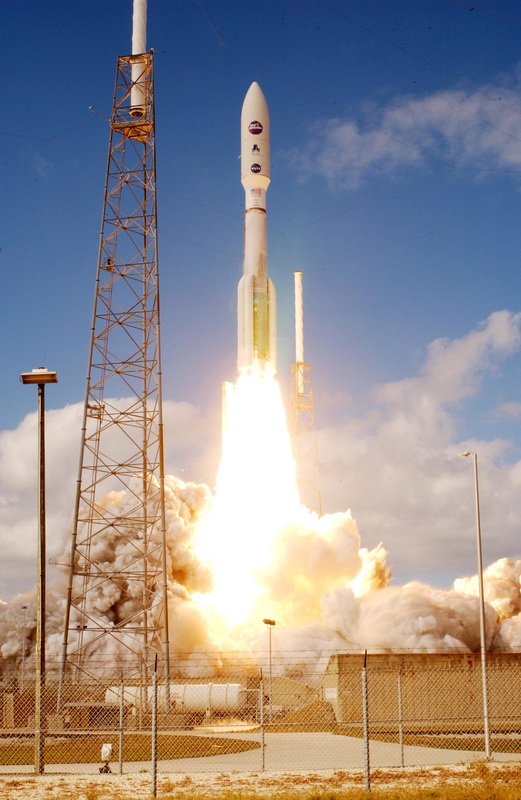
Counting down to a January 17 liftoff, Atlas V was fully fueled and New Horizons was ready for its ride into space, but Upper Level Winds were not cooperating and the two-hour window expired without a launch. Recycling for the next day, teams were more optimistic, though tensions were growing as liftoff had to occur before January 29 to keep the 2015 date with Pluto. In case of a delay into the last three days of January, the encounter would have slipped one year and a delay into February would have taken the Jupiter-flyby off the table leading to a much later arrival at Pluto – as late as 2020.
As clocks ticked down, a power outage occurred at the Johns Hopkins University from where the New Horizons mission is operated and where teams were waiting to assume control over the spacecraft once released by the Atlas V rocket. The various Mission Control Systems could not be restored in time and Atlas V had to be de-tanked to stay on the ground for another night.
On January 19, 2006 everything was ready for liftoff, New Horizons was resting comfortably atop Atlas V ready for its flight into space, Atlas V was fully loaded with propellants, and the range at Cape Canaveral was clear, but the sky was filled with thick clouds that did not permit a liftoff at the opening of the window. Teams waited patiently for a clearing in the clouds and were rewarded with a short gap in cloud cover, allowing them to press into the final countdown sequence.
At 19:00 UTC, the mighty RD-180 main engine of Atlas V awakened and throttled up to full thrust before the five Solid Rocket Boosters ignited and the rocket thundered off its pad with a total thrust of 861 metric ton-force. It was the first flight for the Atlas V in its 551 configuration that was needed to achieve the extremely high energy trajectory required by New Horizons, enabling it to venture out into the depths of the solar system.
Burning 3,300 Kilograms of propellant every second of powered flight, Atlas V quickly gained altitude and speed, departing Florida’s Space Coast. The five boosters burned for one minute and 35 seconds to provide the necessary thrust to send Atlas V on its way to escape Earth’s gravity.
They were jettisoned one minute and 50 seconds into the flight as Atlas V headed onwards powered by the two-chamber RD-180 engine alone, delivering 422 metric tons of thrust by burning 1,150kg of Kerosene and Liquid Oxygen per second. Atlas V jettisoned its five-meter diameter Payload Fairing three minutes and 50 seconds after launch when it had departed the dense atmosphere, allowing the New Horizons spacecraft to be exposed.
The first stage shut down four and a half minutes into the mission with separation from the Centaur second stage a short moment later. Centaur then ignited its RL-10A engine to generate 11,000 Kilogram-force of thrust over the course of a burn of five and a half minutes that delivered the stack to a Low Earth Parking Orbit for a coast phase. This coast was needed to allow the vehicle to reach the proper position for the burns of the upper stages to inject the spacecraft on a path towards Jupiter.
29 minutes and 59 seconds after liftoff, Centaur re-ignited its engine on a burn of nine minutes and 27 seconds to boost the vehicle out of Earth orbit, targeting a velocity of 12.4 Kilometers per second at the cutoff of Centaur 39 minutes and 26 seconds into the flight. Nineteen seconds after Centaur engine shutdown, the Star 48B upper stage was released for ignition of its Solid Rocket Motor at T+40:15. Star 48B completed a spin-up just before ignition and fired its rocket for 86 seconds to give the final boost to New Horizons. The spacecraft was separated from the upper stage 44 minutes and 55 seconds after liftoff at an injection speed of 16,204 meters per second – setting a new record for the fastest man-made object sent into space.
Embarking on a Long Journey
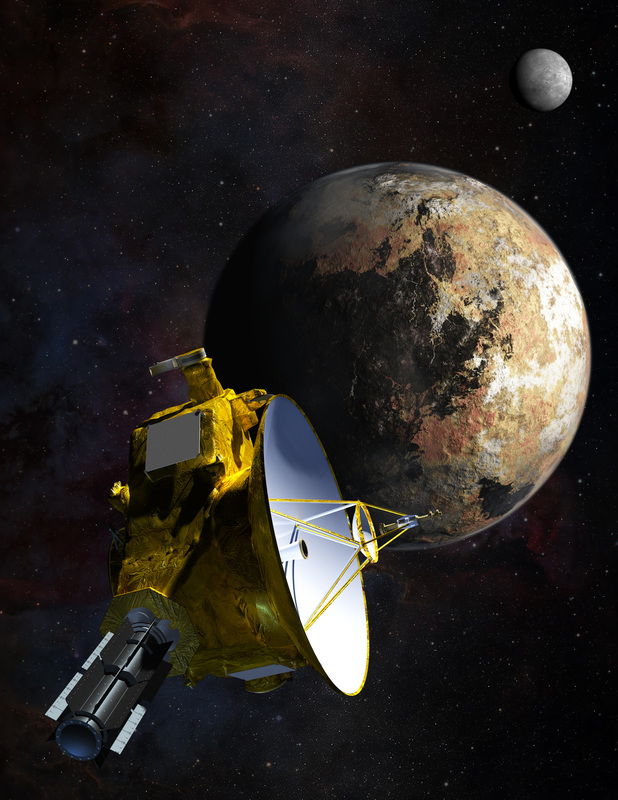
Embarking on a trip of five billion Kilometers, New Horizons settled in fairly quickly, beginning to send data back to Earth that showed everything was in order aboard the spacecraft with all systems in the expected condition after the turbulent ride into space. The mission team spent the first hours of the flight with a set of systems checks that showed good temperatures across the spacecraft and a normal generation of power by the RTG. It took just nine hours for the spacecraft to cross the orbit of the Moon.
Less than a day after liftoff, New Horizons fired its thrusters to reduce its spin rate from 68 to 20 RPM. Three days after launch, the rotation of the spacecraft was reduced further to 5.2RPM to allow the Star Trackers to begin operating and getting the craft under a nominal attitude control in its Nominal Spin Active Mode.
A pair of Trajectory Correction Maneuvers were conducted on January 28 and 30, 2006 with a change in velocity of 5 and 13.3 meters per second, respectively, to correct the insertion inaccuracies and set the craft on its planned course. The accuracy of the Atlas V and Star 48 were remarkable – mission planners had budgeted ten times more propellant for the initial TCM than was actually required, adding to the reserves for a potential mission after the Pluto Flyby.
Testing of the instrument payloads started in the second half of February on the ALICE Ultraviolet Spectrometer, the PEPSSI particle spectrometer and the LORRI long-range telescopic imager. ALICE opened up its protective aperture door and the other two underwent detailed electrical testing. In the first week of March, the other instruments SDC, SWAP and Ralph completed their initial testing activities.
SDC began gathering data shortly thereafter to obtain a complete record of dust abundance from inside the orbit of Mars all the way to Pluto and possibly beyond.
On March 9, New Horizons reduced its spin to zero and conducted its third Trajectory Correction Maneuver in three-axis stabilization to reach the required precision in a very small dV maneuver. The thrusters were fired for 76 seconds and changed the spacecraft’s speed by 1.16m/s, placing it on its trajectory through the small flyby window at Jupiter that had to be intercepted to permit the desired trajectory change towards Pluto.
By the end of March, checkouts of the spacecraft were complete and all instruments had finished electrical testing, but there were a number of one-time deployments still to be made according to outgassing, thermal and solar illumination requirements.
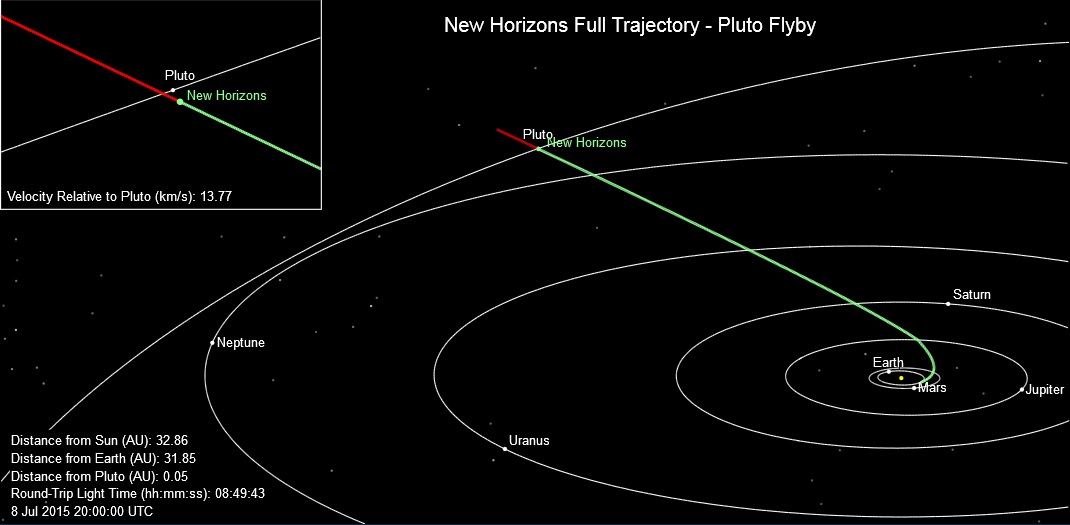
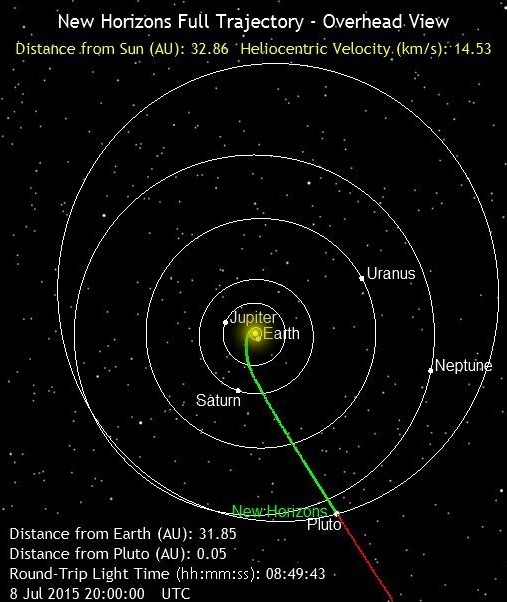
SWAP opened its two protective doors followed later in the spring by PEPSSI and Ralph and finally in the fall of 2006 LORRI that was protected from solar illumination until the spacecraft had reached a sufficient distance.
On April 6, New Horizons crossed the orbit of Mars and headed out into the outer solar system, venturing into the asteroid belt. Trajectory analysis was performed after launch to search for any asteroids that may be sufficiently close to New Horizons’ flight path to permit the observation of them by the instruments. It was found that 132524 APL had a close approach with New Horizons at 4:05 UTC on June 13, 2006 at a distance of 101,900 Kilometers. Ralph was used to track the asteroid from June 10 to 12 to demonstrate the spacecraft’s ability to track rapidly moving objects. The images of the 2.5-Kilometer wide asteroid were not of scientific value as the object was only a few pixels in size.
The first images of Pluto were acquired by New Horizon’s eagle-eyed LORRI panchromatic imaging telescope in late September 2006 when the spacecraft was still 4.2 billion Kilometers from Pluto. This demonstrated that the spacecraft was capable of tracking distant objects with LORRI for optical navigation when coming closer to Pluto and entering the Kuiper Belt.
Pluto lost its planetary status on August 24, 2006 when the International Astronomical Union formally defined the term planet with three criteria – a) it is in orbit around the sun, b) it has sufficient mass to assume hydrastatic equilibrium (round shape) and c) has cleared the neighborhood around its orbit. Pluto meets the first two criteria, but is part of the Kuiper-Belt that is filled with other icy objects and is therefore regarded as a Dwarf Planet, in particular a Plutoid – a trans-Neptunian dwarf planet large enough to be round in shape. Pluto was reclassified over 76 years after its discovery, taking its place among its icy companions in the Kuiper Belt and the other Dwarf Planets in the solar system.
Pluto’s demotion from planetary status also meant that New Horizons was no longer a mission to the last unexplored planet in the solar system. The scientific return of the mission will not be lessened by that as the Kuiper Belt holds a number of highly anticipated clues on the early stages of the solar system and its initial evolution. With the new title of the first exploration mission to a Plutoid, New Horizons continued onwards, heading into the outer reaches of the solar system in the months after its successful launch.
Jupiter Flyby
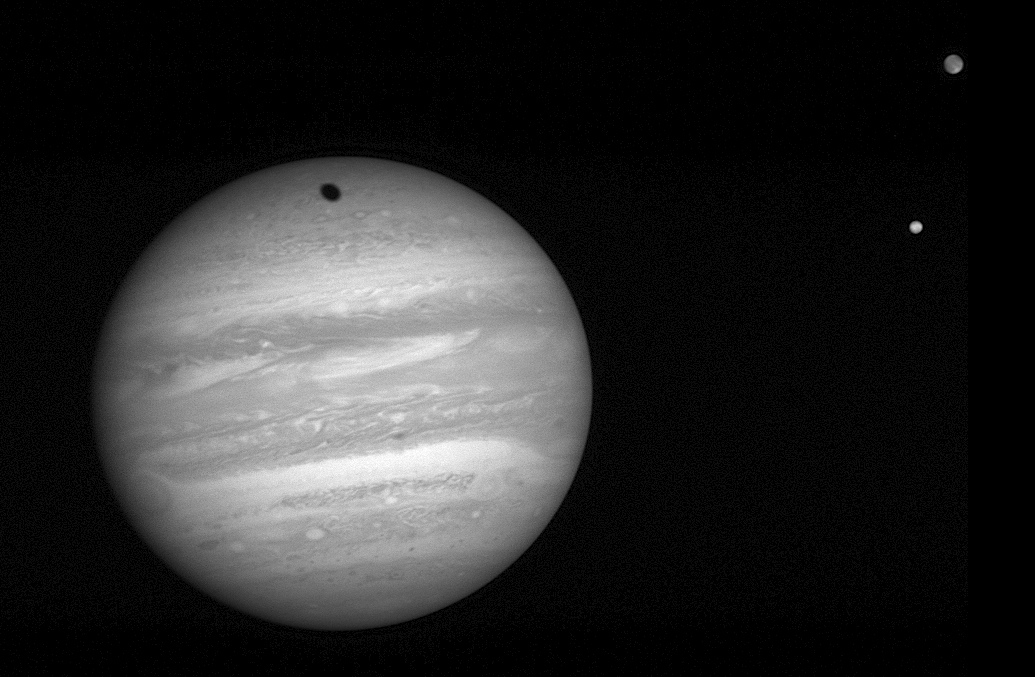
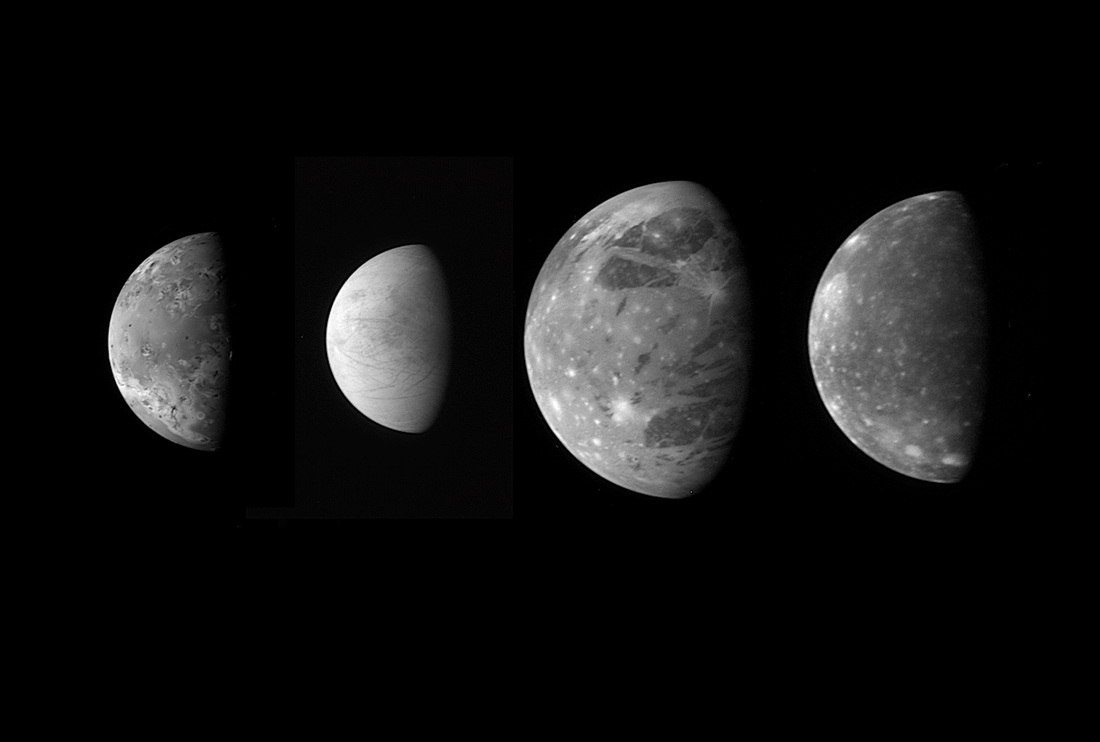
The primary operation in the initial mission phase was the flyby of Jupiter, set up to take New Horizons past the gas giant at a distance of 2.3 million Kilometers to boost the spacecraft’s speed by 4 Kilometers per second, also curving the trajectory for the Pluto encounter. The first image of Jupiter was taken by LORRI in September 2006 when the craft was still 291 million Kilometers from the planet.
The flyby of Jupiter occurred at 5:43 UTC on February 2007 and was set up to rehearse a full operation of the science instruments of the spacecraft with over 700 science sequences planned for the weeks leading up to, the encounter itself and the outbound leg away from Jupiter. The science campaign lasted from January to June and generated 36GBits of data – more than the Pluto encounter given the higher data speeds that could be achieved at Jupiter’s distance to Earth and the fact that onboard processing algorithms were not ready yet for all of the instruments.
The New Horizons Jupiter campaign was the first close up look at the ever-changing planet since the end of the Galileo mission in 2003 and targeted a number of areas – Jupiter’s plasma environment, the atmospheric conditions, its moons and the ring system. The scientific return was hoped to add valuable observations of Jupiter with state-of-the-art instruments to deliver information on the atmospheric structure and cloud composition, atmospheric winds and other measurements. Ralph delivered the first close-up images of the Little Red Spot and New Horizons acquired imagery and spectral data from the rings and looked for additional moons, none of which were found. The two particle instruments, SWAP and PEPSSI delivered valuable measurements of the plasma environment including observations of plasma bubbles within the magnetotail of the gas giant.
New Horizons also observed some of Jupiter’s moons, though the Galilean moons were in poor positions for observation. Nevertheless, the instruments delivered valuable data on Io, showing three new sites of volcanic activity, one reaching altitudes of 330 Kilometers.
Io imagery provided scientists with an excellent look at the structure and motion of rising volcanic plumes and their fall back to the surface. Callisto was imaged by LEISA in the infrared wavelengths and the orbits of some of the smaller satellites were refined through imaging. The Radio Science Experiment was exercised for the first time and the SWAP and PEPSSI instruments remained active as New Horizons departed the vicinity of Jupiter, thanking the giant planet for a 4km/s velocity boost.
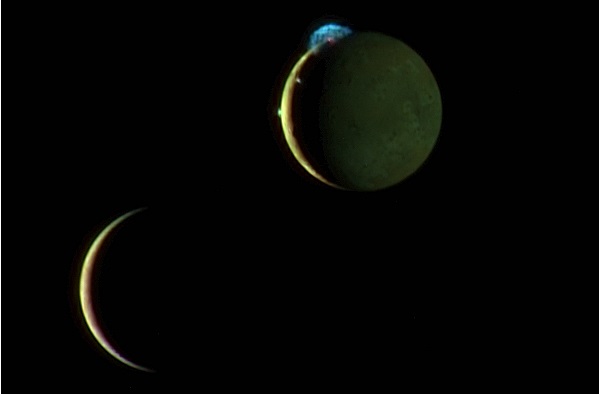
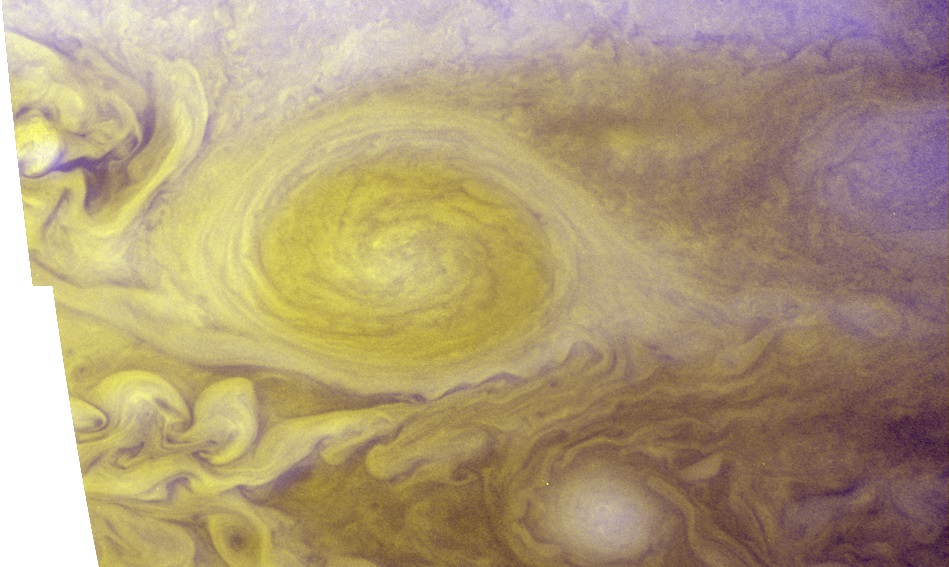
In March of 2007, New Horizons’ Command and Data Handling system, for the first time, ran into a 2-bit code error that was automatically detected and led to a reboot of the onboard computer and the transition of the spacecraft into safe mode. Teams on Earth sent instructions to the craft to recover from safe mode and the mission continued as planned with the downlink of the Jupiter data set that took until June 2007.
With its initial mission operations complete and no more objects to explore, New Horizons prepared to head into hibernation. Placing the craft in hibernation for the majority of the cruise to Pluto has the advantage of propellant conservation, the protection of onboard equipment by powering down systems, and the reduction of operational support, allowing the mission team to be reduced because not as much support is needed by the spacecraft.
An initial test hibernation started in late June and lasted for just two weeks to check the systems response to this spacecraft mode. The period of spacecraft activity in July also included an occultation measurement by ALICE as Jupiter moved across the sun as seen by the spacecraft. Another test hibernation of one month lasted until August 20. In this initial hibernation modes, New Horizons sent a beacon signal every two weeks in the form of a “green” beacon indicating all is well aboard the craft, “yellow” for off-nominal but manageable parameters and “red” alerting teams of a condition in which intervention from the ground is needed.
New Horizons made its fourth trajectory correction maneuver on September 25, 2007 to make up for slight errors in the flyby flight path by firing its thrusters for 15 minutes and 37 seconds to achieve at delta-v of 2.37m/s.
Hibernation
Heading into its first long hibernation cycle, New Horizons sent beacons once a month, requiring virtually no support for most of the time, decreasing time needed on the Deep Space Network and personnel at Mission Control. For two months each year, New Horizons was woken up to undergo a complete check of its systems and instruments. The spacecraft passed the orbit of Saturn in June 2008 and made its annual checkout beginning in September before heading back into hibernation.
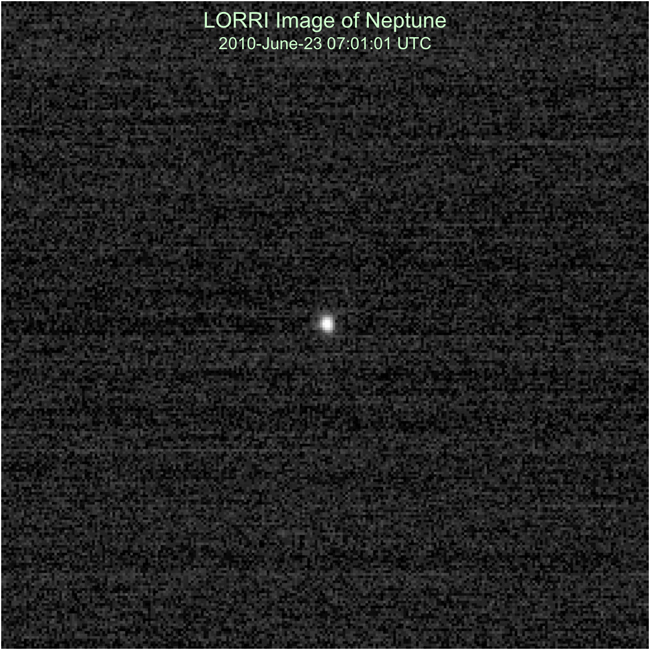
The next Trajectory Correction Maneuver came on June 30, 2010 and lasted for just 35.6 seconds making up for a slight drift in the trajectory due to the thermal emissions of the RTG. The halfway point of the New Horizons mission in terms of travel time was passed in mid-October 2010.
In preparation for New Horizons’ arrival at Pluto, more and more time was spent by the Hubble Space telescope studying the Pluto system. In July 2011, the discovery of a fourth moon in orbit around Pluto was announced. Later named Kerberos, the satellite measures less than 35 Kilometers in diameter and orbits at a mean distance of 59,000 Kilometers. Hubble imagery showed a fifth satellite that was discovered in 2012 and named Styx, measuring less than ten Kilometers in size and orbiting at 38,000 Kilometers mean distance.
These new satellite discoveries were of some concern for the mission as they likely originated in collisions of Pluto with other objects that may have left more debris in the vicinity of Pluto that could damage the spacecraft. It was therefore assessed whether a change in the trajectory was needed to move New Horizons’ path closer to Pluto into a zone cleared of any debris through atmospheric drag. Analysis took into account a series of Earth-based observations, occultations of the Pluto system and computer simulations that showed the overall risk of a fatal debris impact to be under 0.3%, allowing New Horizons to stick to the original trajectory.
SWAP, PEPSSI and SDC were activated in July 2012 to begin gathering heliospheric data on the inbound leg to Pluto in a change from the planned procedure since it was only expected to operate SDC at that point, but the additional plasma data was considered a welcome addition and New Horizons had the capacity in memory and energy to make these additional observations. Data gathered by the instruments was downlinked in January 2013 during a short interruption of hibernation for checkouts. This period was also used to upload a new command and data handling software to the computers of the vehicle to deal with computer resets that occurred more frequently than initially predicted and led to spacecraft safe modes.
The first images taken by New Horizons resolving Pluto and Charon as two separate objects came in early July 2013, but the two objects only filled a few pixels. On July 14, 2014, the sixth Trajectory Correction Maneuver was conducted by New Horizons. In progress at the same time was a campaign using the Hubble Space Telescope to look for a suitable Kuiper Belt Object as a target for New Horizons after the Pluto flyby. No objects had been found before and there was some urgency to find an object within reach of New Horizons, meaning it could be reached with the remaining propellant within a reasonable amount of time. Three objects were identified and one promised to be reachable by New Horizons within five years of the Pluto encounter.
Pluto Encounter
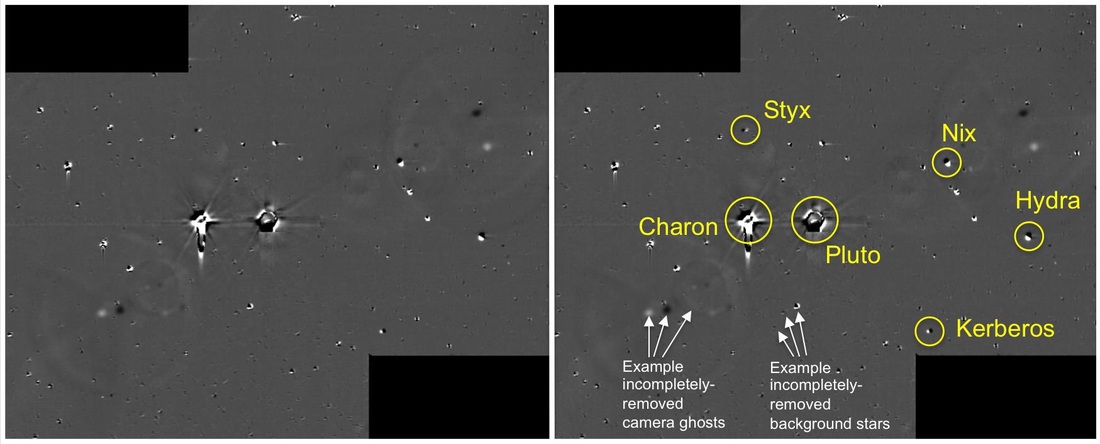
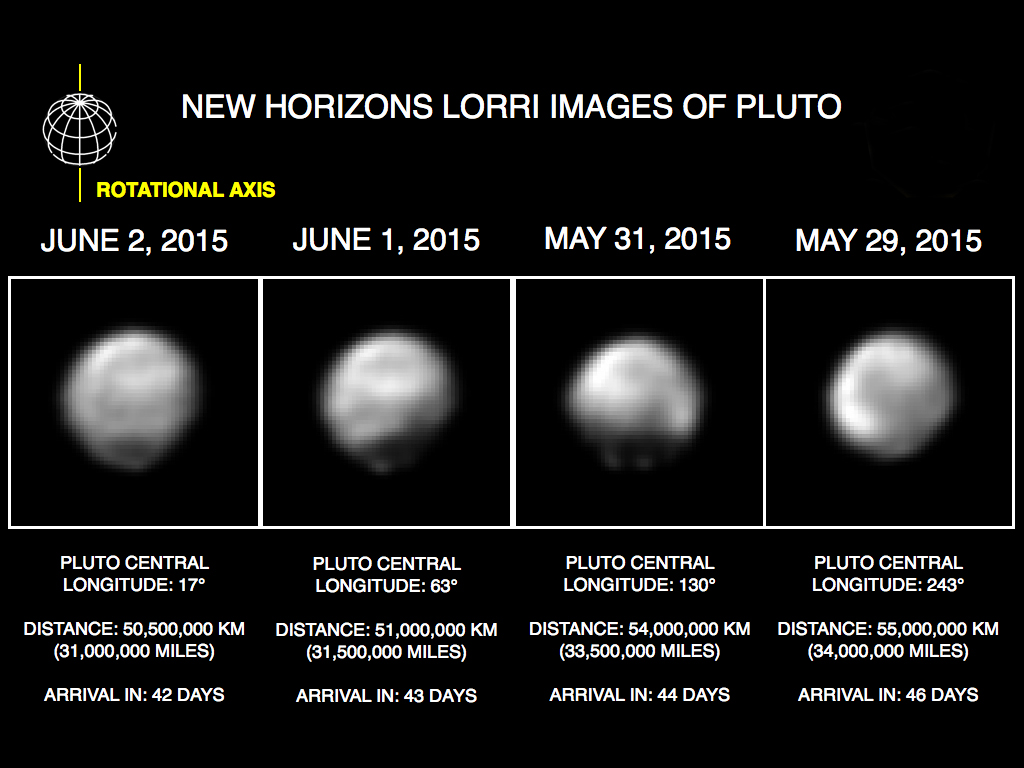
New Horizons woke up from its final pre-encounter hibernation on December 6, 2014 for a final set of checkouts and reconfigurations for its historic encounter. Phase 3 Encounter Operations, also known as Distant-Encounter Operations started on January 4, 2015. Imagery acquired by LORRI and Ralph at that time showed Pluto only a few pixels across, but provided crucial data for optical navigation for the calculation of trajectory corrections for the final flyby path setup, also aided by precise measurements of Pluto’s position and orbit from ground-based assets.
Imagery showed Pluto and Charon in their ballet – since Charon is over half the size of Pluto, the barycenter of the Pluto-Charon system lies outside Pluto and both bodies rotate around that point, which is clearly visible in photos acquired by LORRI. Nix and Hydra first showed up in LORRI images taken in late January when using longer exposure times.
The yet smaller moons, Kerberos and Styx, were visible in imagery starting on April 25. As the spacecraft got closer, its imaging capability was used to look for unknown objects that could be a danger to the spacecraft during flyby.
Beginning on May 15, imagery acquired by LORRI surpassed the resolution of Pluto images by Hubble and color imagery delivered by Ralph began showing the first features as well. The photos showed Pluto in the expected red color, but also revealed Charon to be much darker. Early measurements also showed that Charon consists of about 50% of ices and 50% of rocky material while Pluto is about one third ice and two thirds rock.
The final pre-encounter trajectory correction maneuver was conducted on June 30, a 23-second thruster burn changing the vehicle’s velocity by 0.8 Kilometers per Hour to properly position itself for the flyby that is basically targeting a 100 by 150-Kilometer window that has to be passed within 100 seconds of a specified time so that the science sequence can work out.
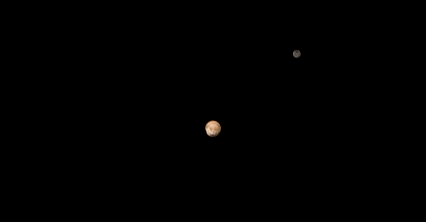
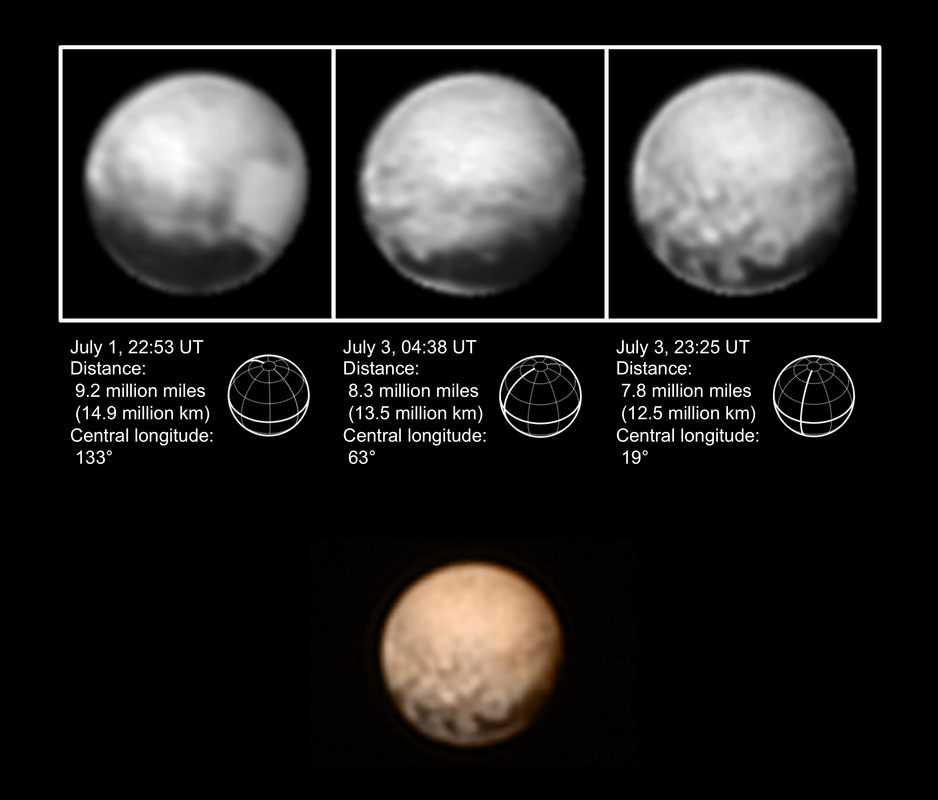
If the window or timing is off for some reason, the spacecraft pointing profile planned well in advance would not be correct and the science targets would not be centered within the field of view of the instruments.
Heading into its close encounter phase on June 24, New Horizons was still 26 Million Kilometers from Pluto. Three of the spacecraft’s instruments are active throughout the encounter: SDC to continue gathering data on dust particles, possibly even capturing data on dust grains in the vicinity of Pluto; SWAP and PEPPSI to study the interaction of the Pluto system with the solar wind, examining atmospheric loss phenomena at Pluto starting at great distance and getting closer and closer.
Initially, imagery on approach is only captured by LORRI, collecting high-resolution panchromatic images to be joined by Ralph as New Horizons gets closer for multi-band infrared and visible imaging with the MVIC and LEISA systems, the Multispectral Visible Imaging Component and Linear Etalon Imaging Spectral Array.
The most critical Encounter Observations pick up 3.2 days ahead of closest approach to cover the entire surface of Pluto and Charon as they rotate once every 6.4 days. Long-range observations made by LORRI will enable almost the entire surface of Pluto to be mapped at a resolution of 40 Kilometers per pixel. Imaging will be repeated twice per Plutonian Day to look for visual changes that could be the result of snows, atmospheric activity or cryovolcanism. A small portion of the southern hemisphere will remain in shade for all observations given Pluto’s axial tilt.
All in all, the encounter sequence includes over 380 observation sequences – ranging from the continuous measurements by the Dust Counter, the SWAP and PEPSSI instruments over imaging operations with LORRI and Ralph, tracking and radio occultation measurements with REX, and solar occultation and UV spectral imaging with ALICE.
Because New Horizons has to re-orient the entire spacecraft for instrument pointing and communications with Earth, data can not be downlinked in real time. Furthermore, data rates achieved from Pluto reach only 1,900bit/s at best and the volume of data collected as part of the encounter is significantly larger than what could be downlinked in real time.
There is however, a plan to obtain fail-safe data in the form of imagery and spectral data. The final set of Optical Navigation Data is acquired on Sunday, July 12 including three LORRI images of Pluto at a resolution of 13 Kilometers/pixel and two LORRI frames of Charon at the same resolution. Fail safe data is downlinked throughout the day on Monday as part of several communications sessions. This data is downlinked before New Horizons traverses through the Pluto system as a ‘just in case’ to have some high-quality data safely on Earth for the unlikely event New Horizons does not survive the close encounter, for example due to a debris hit.
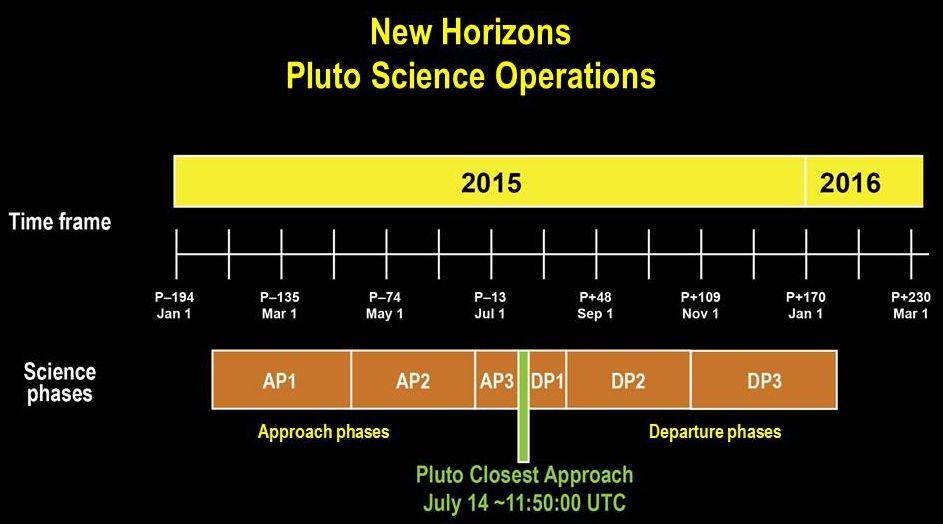
The Fail-Safe A data downlink starts on Sunday at 22:11 UTC and lasts for 4.2 hours including data from the LEISA instrument, multi-band infrared imagery of Pluto and Charon at medium resolution and ALICE UV spectral imagery of the two targets. The next downlink is a 2.5-hour session starting at 3:44 UTC on Monday, July 13 again including LEISA data followed by another downlink dedicated to LEISA infrared imagery beginning at 9:15 UTC. The final Fail Safe downlink starts at 12:54 UTC on July 13 lasting for 3.5 hours and including a LORRI frame of Charon at 7.2km resolution acquired at 6:37 UTC at a range of 1.46 million Kilometers. Also part of that data package are two multi-band images acquired by MVIC showing Pluto from a distance of 1.406 and Charon from 1.418 million Kilometers at a resolution of 28 Kilometers per pixel. In addition, approach data from ALICE, LEISA, PEPSSI and SWAP will be part of this downlink.
The final pre-encounter downlink lasts for around 50 minutes starting at 2:20 UTC on July 14 and includes one LORRI frame showing Pluto acquired at 20:17:28 UTC on July 13 at a distance of 768,000 Kilometers. This image will have a resolution of 3.8 Kilometers and show the entire sunlit disk of Pluto, the best single-frame photo to be downlinked during the encounter period.
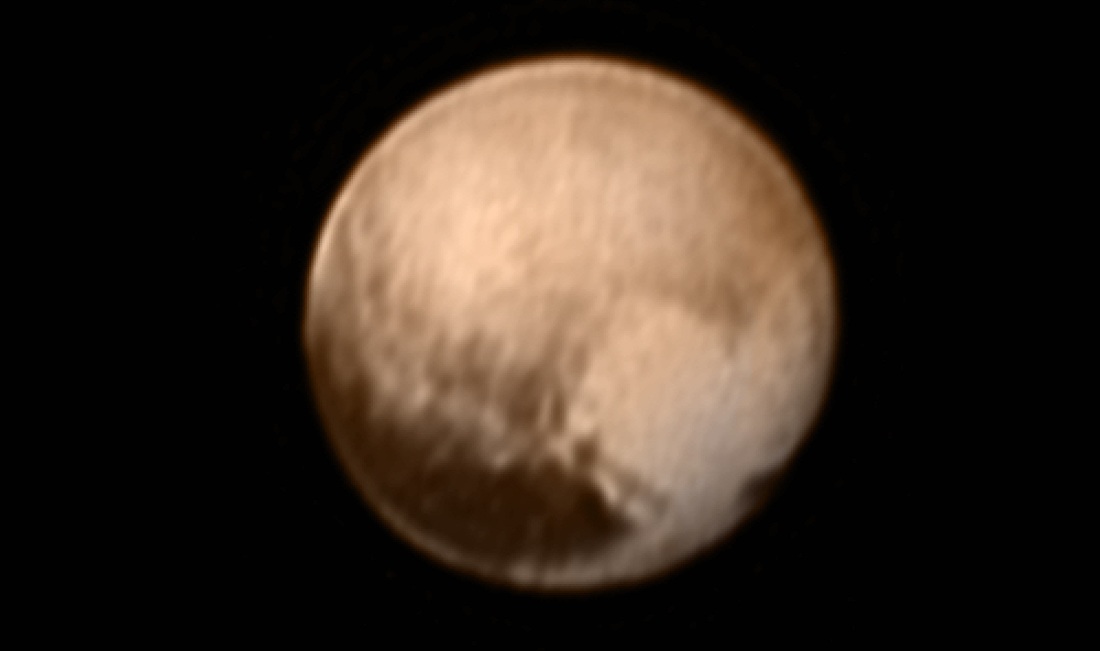
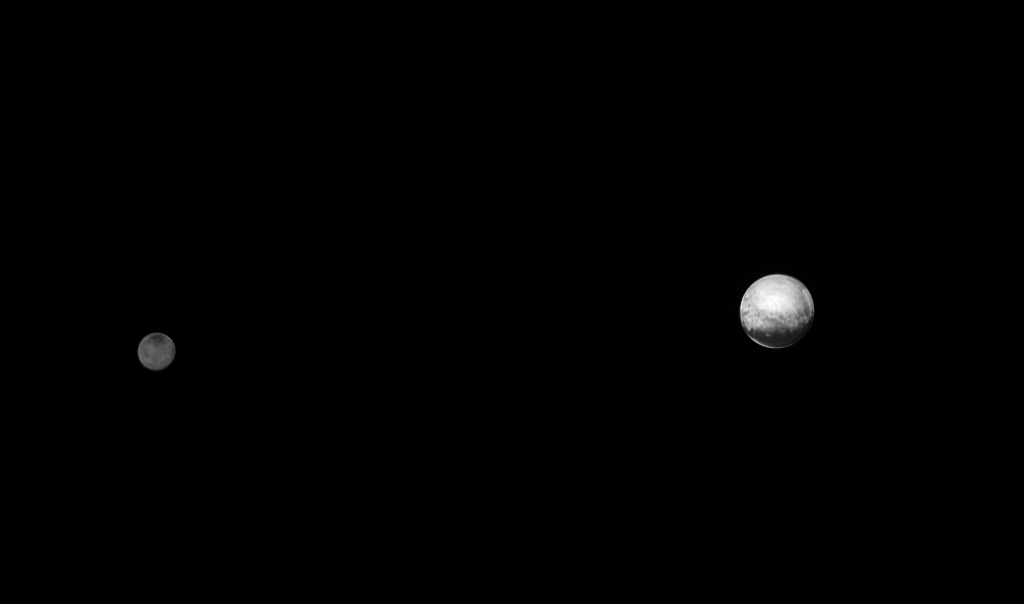
The most critical period of the New Horizons mission, and the culmination of a nine-year, five-billion Kilometer journey, will be the science observations made in the 12 hours leading up to closest approach and the 12 hours following the close encounter. On approach, New Horizons continues to gather Ultraviolet spectral imagery for atmospheric studies, multi-band imaging of Pluto and Charon using MVIC to generate full-color images and methane maps, infrared imaging to determine the composition of the surface of Pluto and Charon, and LORRI high-resolution panchromatic images of areas on Pluto and Charon.
The observation sequence that occurs at Pluto requires New Horizons to be in constant motion – slewing the spacecraft from target to target, alternating between observations of Pluto and Charon as well as the two small moons Nix and Hydra. The yet smaller moons Kerberos and Styx are observed as well but not with the frequency as the others due to their small size in the field of view of the instruments, but also due to their late discovery, requiring changes to be made to the science sequence that had been planned for years in advance.
Generally, the ALICE ultraviolet imaging spectrometer will be active through the vast majority of the 48 hours centered around the closest approach, gathering data on whatever target is within the field of view. Also active continuously are the SWAP, PEPSSI and Dust Counter instruments.
The normal science sequence at each target consists of New Horizons using the scanning Ralph instrument and its MVIC visible imager and LEISA infrared imaging system that require the target to the moved across the pushbroom sensors for imaging.
Moving on one axis for Ralph observations, New Horizons also has the capability to hold perfectly still in a given attitude for LORRI imaging operations that require the staring instrument’s narrow field of view to be pointed to the target. All attitude and instrument sequences are programmed based on time-tagged commands. LORRI will either be used for staring images capturing the entire target within one frame or conduct mosaic imaging when New Horizons is close enough. Ralph also conducts mosaic image acquisition during the close approach to Pluto and Charon.
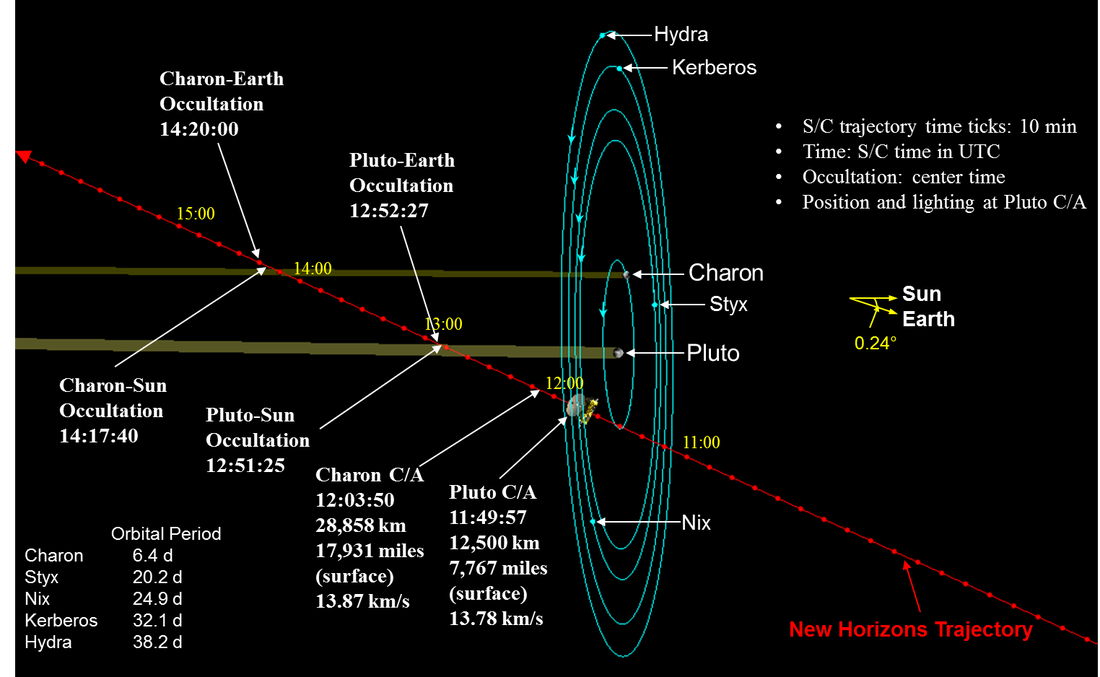
New Horizons has its closest approach to Pluto at 11:49:57 UTC on July 14 at a range of 12,500 Kilometers and a speed of 13.78 Kilometers per second followed by the closest approach to Charon at a range of 28,585 Kilometers and a relative velocity of 13.87 Kilometers per second.
Over an hour after closest approach come the critical occultation sequences that involve the ALICE and REX instruments. ALICE will observe the atmosphere of Pluto and Charon as it passes between the instrument and the sun while REX records a high-power radio signal transmitted from Earth as the atmosphere passes in between the transmitter and receiver. The two occultation measurements are made simultaneously as the Pluto-Sun occultation occurs at 12:51 UTC followed one minute later by the Pluto-Earth occultation. The Charon-Sun occultation comes at 14:17 UTC followed three minutes later by the Charon-Earth occultation opportunity.
On the outbound leg from Pluto and Charon, observations will continue. While the spacecraft is conducting science, no data can be downlinked to Earth because the High Gain Antenna is not pointing to the correct direction. The first post-encounter data packet is expected on the ground at 0:33 UTC on July 15 – the start of a downlink session of just half an hour to deliver status telemetry to the ground, but no science data. This downlink session will be the first sign of life from New Horizons since the last pre-encounter downlink and it will tell the Mission Team that the spacecraft survived the close approach. Telemetry will provide teams insight into the status of the spacecraft and whether the approach science sequence executed as planned.
After this short communications session, the spacecraft goes back to observations as part of the Close Encounter Science Phase that lasts until the late hours on July 15.
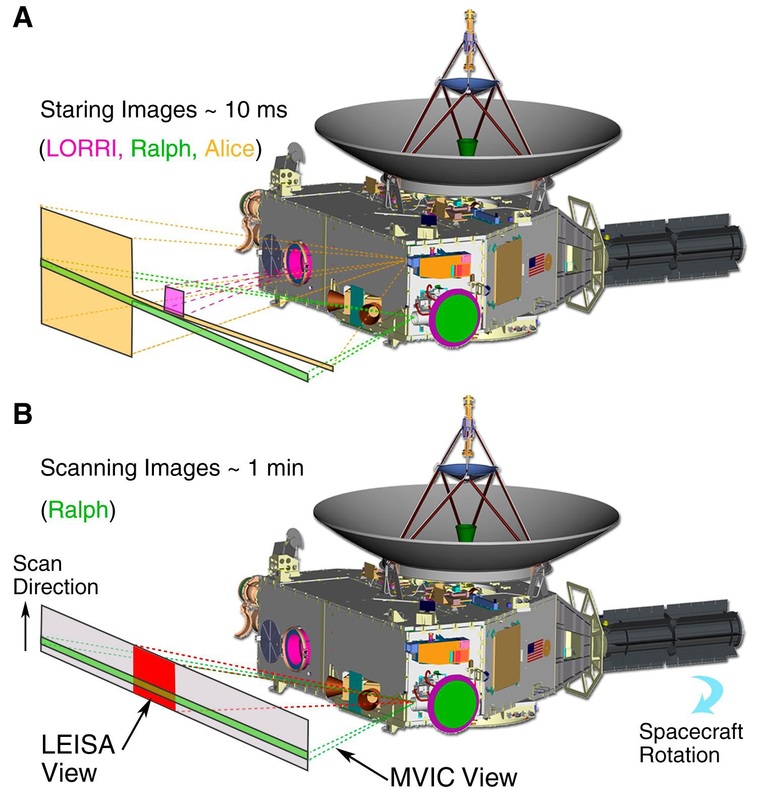
High-priority data selected well in advance of the flyby will be downlinked in the days after the encounter beginning with five First-Look Data downlink sessions followed by seven sessions during which High-Priority Data will be sent to Earth. The First-Look A downlink includes three LORRI images, two of Pluto and one of Hydra, plus plenty of Telemetry sent to Earth as part of a 90-minute comm sessions starting at 9:29 UTC on July 15 (ERT).
First Look-B is an almost seven-hour downlink starting at 12:37 UTC and includes data from the ALICE, LEISA, REX and SWAP instruments plus LORRI images of Nix and Pluto in close-up. The two-hour First Look-C downlink is comprised of PEPSSI data followed by a two-hour First Look-D downlink beginning at 5:35 UTC on the 16th consisting of PEPSSI and SWAP data plus three frames LEISA Charon observations. First Look-E downlink over four-hours starting at 9:04 UTC includes SWAP data plus a color image of Pluto acquired by MVIC.
From July 17 to 20, New Horizons will downlink eight High-Priority Data Packages, comprised of the most important observations made during encounter. This data includes more frames of the LORRI and LEISA close-up mosaics of Pluto and Charon, LORRI images of all targets that were observed, plus critical data from the other instruments with the exception of SDC. The end of the last High-Priority data downlink is at 16:20 UTC on July 20, marking the start of the downlink of Low-Speed Data.
New Horizons handles a total of 51 different types of data.
Breaking it down for the instruments, science data is written as part of a Low-Speed Data Bus for the SWAP, PEPSSI, SDC and part of the ALICE instruments while LORRI, Ralph, REX and most of ALICE data is written in high-speed. These two types of data, Low-Speed and High-Speed, are handled differently in onboard processing and during downlink. It is most efficient to downlink the Low-Speed data in a playback mode with scheduled pauses between communications sessions that normally last for eight hours per day. It was decided to downlink the entire Low-Speed data before the high-speed data is downlinked because it contains the telemetry gathered during the encounter including the pointing information that will be needed for data processing. The Low-Speed Data downlink will take nearly two months and is expected to end on September 14. (No new imagery will arrive between July 20 and September 12.)
At that point, the downlinked data switches to Browse-Mode data of the High-Speed Instruments. This data set includes all data acquired during encounter compressed in a lossy algorithm to provide teams with an overview of what is available and what data should be downlinked in raw quality first. This Browse Downlink takes ten weeks and is expected to wrap up on November 16.
After that, lossless compressed data will be downlinked based on the selection of the science team. Having collected about 10Gbits of data during encounter and only working with eight hours of 600 to 1,900 bit/s, New Horizons will be busy downlinking data for the better part of a year with means all data is expected to be on the ground by the end of 2016 when the primary mission of New Horizons will be declared complete and scientists can get their hands on the full data set.
Extended Mission
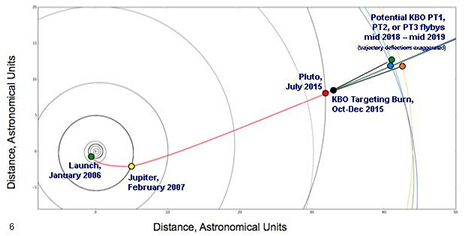
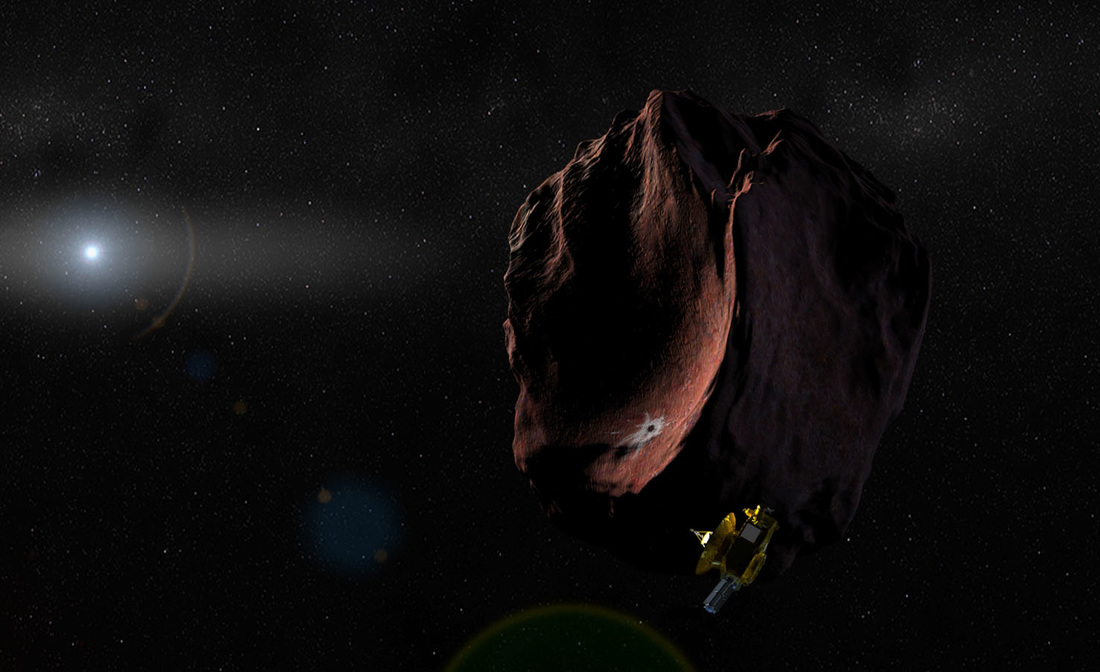
The completion of the Pluto Encounter marks in essence a time of overlap between the primary and extended mission of New Horizons – the final task of the primary mission being the data downlink and the first operation of the extended mission being the setup of the trajectory for the exploration of one more Kuiper Belt Object.
The search conducted in 2014 with the Hubble Space Telescope came up with three potential Kuiper Belt Object targets within the reach of New Horizons, meaning they could be accessed with the remaining propellant and in a reasonable amount of time. One of the three targets definitely meets those criteria, the other two are still being assessed. All are about 20 by 55 Kilometers in size and are located about one and a half billion Kilometers beyond Pluto and can be reached between mid 2018 and 2019.
After the Pluto encounter, the New Horizons mission team will choose the best candidate object and begin planning the trajectory to it leading up to a Trajectory Correction Maneuver in the fall of 2015 to begin the setup of the proper trajectory to the Kuiper Belt Object.
However, before the KBO flyby can be realized, New Horizons has to go through the formalities of requesting funding for an extended mission by submitting a proposal of the expected scientific achievements of the extended mission which will be assessed by NASA, also taking into account the health of the spacecraft and instruments. The extended mission is expected to begin in 2017 with detailed planning for the KBO encounter.
